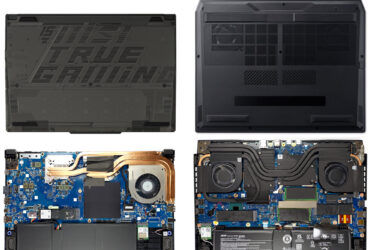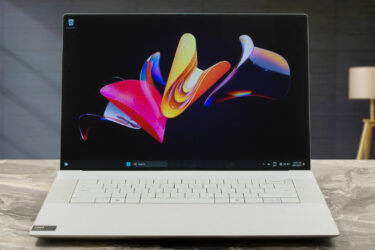Intel Optane Memory quick review – a device that turns your HDD into an SSD
 After our AMD Ryzen 7 1700X review, it is time to visit the opposite “bank” where Intel offers a device that increases your HDD’s speed many times. We are talking about Optane Memory, also referred to as just Optane. This memory product has already hit some markets and if you are wondering if it’s worth it and what it requires to run smoothly, the following lines will answer these questions.
After our AMD Ryzen 7 1700X review, it is time to visit the opposite “bank” where Intel offers a device that increases your HDD’s speed many times. We are talking about Optane Memory, also referred to as just Optane. This memory product has already hit some markets and if you are wondering if it’s worth it and what it requires to run smoothly, the following lines will answer these questions.
Intel revealed its NVMe technology two years ago and today the 3D XPoint-based device is a very good choice for those of you who do not intend to or don’t have the money for a separate SSD. Intel Optane offers an opportunity of increasing the speed of a conventional HDD which is a key factor for users who own such a drive with big capacity (1, 2, 5TB and so on). Of course, Intel Optane can work with SSDs but the difference in speed will be negligible. In order for you to install this device, you will have to meet certain requirements such as having an M.2 slot on your motherboard. In the “Construction, required hardware and installation” section we shall disclose more about the model we are using.
You can find more information about current availability and pricing of Intel Optane products here: http://amzn.to/2uxpyfN
Contents
Retail package
We shared with you that Intel Optane uses an М.2 slot. Actually, the device looks pretty much like a standard M.2 SSD but that’s only on the outside. Apart from the stick itself, the package carries a sticker that you can put wherever you find fit, as well as an installation manual.
Construction, required hardware and installation
For now, you can find Intel Optane in two variants – 16GB and 32GB memory configurations. Our unit had 16GB and was in the iconic blue color. In its front part Optane features an integrated circuit 3D XPoint memory and next to it we find the empty spot for the second circuit that comes with the 32GB models. They are covered with a sticker that carries information about the model itself, its capacity and country of origin. In the rear part of the device there is only one sticker confirming that Intel Optane’s interface is PCIe NVMe 3.0 x2.
 This product is a PCIe 3D XPoint-based M.2 x2280 SSD that caches your frequently used information. Intel Optane, similarly to random access memory, stores each opened application with the difference that in case of power off or power outage Intel Optane does not lose information, unlike RAM.
This product is a PCIe 3D XPoint-based M.2 x2280 SSD that caches your frequently used information. Intel Optane, similarly to random access memory, stores each opened application with the difference that in case of power off or power outage Intel Optane does not lose information, unlike RAM.
Additionally, the new device of the American company has a latency which is only 10 times higher than that of RAM – in comparison, NAND-based SSDs offer latency of 100 thousand, and HDDs can reach up to 10 million. On a “cell” level, Optane is 1000 times faster than NAND memory. Unfortunately, however, due to limited bandwidth there is no chance of achieving a device thousand times faster than SSDs manufactured with NAND memory.

Intel Optane is not meant for everyone and this is one of the few drawbacks that it has. If you want to install this NVMe device without any problems, you need to have the latest generation Intel components. Your motherboard’s socket has to be 1151, the chipset – Intel 200 (Q270, Z270, H270, Q250), and your processor – 7th gen Intel Core. In brief, you need to have at least an Intel Core i3 Kaby Lake processor and a motherboard with the appropriate chipset. We don’t have any idea yet as to why the 7th gen Celeron and Pentium processors are not in the list of supported chips. In addition to them, Skylake processors which also use the 1151 socket are not supported either – the image below displays all supported platforms by Optane Memory.

Optane features 16/32GB of memory and the smaller model costs a bit over $50. Considering the fact that SSDs are more and more purchased as a drive for one’s OS and most important programs, Optane is a good choice for those of you who only have a large HDD and are looking to expand its performance.
The installation of Intel Optane Memory is quite simple. You will hardly have any problems installing it in the motherboard – you just need to find your M.2 slot. After that, you just power up your machine and install the drivers that can be found on Intel’s official website, and sometimes in the motherboard’s drivers. During the installation you may have to update your BIOS – the process is automatic.

After you restart the system, a window will appear and will confirm the installation and ask you to launch the application. Intel Optane’s control panel has a status indicator and when first loaded, it will be disabled but you can switch it on by pressing “Enable”. After this, the process of launching Intel Optane as a device for information caching will start – another system restart will be needed after this process. Bear in mind that the software moves some OS files from the HDD to the Optane stick and if you want to detach the memory, you will have to disable it from the Intel Optane Memory control panel first.
Optane Memory Specs Sheet
| Form factor | M.2 22 x 80mm |
|---|---|
| Interface | PCIe NVMe 3.0 x2 |
| Sequential read speed | 900MB/s |
| Sequential write speed | 145MB/s |
| Random read speed (IOPS) | 190000 IOPS |
| Random write speed (IOPS) | 35000 IOPS |
| Latency – read | 8 µs |
| Latency – write | 30 µs |
| Active consumption | 3.5 W |
| Passive consumption | 1 W |
| Operational temperature | from 0 to 70 degrees Celsius |
| Warranty | 5 years |
Configuration Specs Sheet
| Processor | Intel Core i5 (4-core/ 8-thread, 3.40 – 3.80 GHz, 16MB cache) |
|---|---|
| Motherboard | ASRock Fatal1ty H270M Performance |
| RAM | Crucial 16GB (2x 8192 MB) – DDR4, 2133 Mhz |
| GPU | NVIDIA GeForce GT 1030 |
| Case | NZXT H440 |
| Storage | ADATA SSD SU800 256GB |
| PSU | Raidmax Cobra Power RX1200AE-B |
| OS | Windows 10 64-bit |
| Graphics drivers | GeForce 384.76 |
Tests
To test if Optane Memory really increases the speed of a conventional HDD by a considerable margin, we decided to convey all sorts of benchmarks using our Toshiba 1TB HDD. In the lines below, you will observe HDD test results with and without Optane Memory, as well as a table comparing these readings. To make sure that the performance is improved after data caching, we conveyed each of the tests two times – every first two shots display HDD operation without Intel Optane, and every second two – with Optane engaged.
OS boot
We decided to conduct this test so as to see whether Intel Optane can boot our OS faster than a conventional hard drive. As most of us know, when booting an OS on an HDD, a computer needs approximately 40-50 seconds after data caching. After installing Windows 10 we thought we’d see what time the HDD will need to load completely. And so the result we got was not flattering – a total of 105 seconds or almost 2 minutes. Upon the second boot after caching we got a reading within the expected from an HDD with 5400 rpm – 36.2 seconds.
After installing Intel Optane, we could really tell the difference. Right from the first OS boot, our desktop “rose” for 17.4 seconds, which is a remarkable result. We also decided to check whether there will be another improvement after the device caches the data – we recorded a splendid result of 15.4 seconds.
PCMark7
Intel Optane results
| Тест | Windows Defender | Importing pictures | Gaming |
| Твърд диск | 1.07MB/s | 5.5MB/s | 3.6MB/s |
| Intel Optane | 6.08MB/s (+468%) | 25MB/s (+355%) | 19MB/s (+428%) |
ATTO Disk Benchmark
Intel Optane results
CrystalDisk
Intel Optane results
| Test | Sequential Read | Sequential Write | Random Read 512K | Random Write 512K | Random Read 4K | Random Write 4K |
| HDD | 101MB/s | 86MB/s | 32MB/s | 30MB/s | 6MB/s | 12MB/s |
| Intel Optane | 854MB/s (+746%) | 144MB/s (+67%) | 838MB/s (26х) | 144MB/s (+380%) | 698MB/s (116х) | 139MB/s (12х) |
AS SSD
This benchmark test is only suitable for SSDs, unless you do not want to spend your day waiting for results from a conventional HDD. It is namely for this reason that the screenshots below will display the results from our 5400 rpm HDD with Intel Optane.
Verdict
 This new device left us really pleasantly surprised, considering the features it offers at this price. Of course, most users who want to put together a contemporary configuration, would hardly miss the chance to use a SATA or even an M.2 SSD. For those of you who don’t think they need an SSD but large storage, Intel Optane Memory is a very good solution for increasing the performance of a conventional HDD.
This new device left us really pleasantly surprised, considering the features it offers at this price. Of course, most users who want to put together a contemporary configuration, would hardly miss the chance to use a SATA or even an M.2 SSD. For those of you who don’t think they need an SSD but large storage, Intel Optane Memory is a very good solution for increasing the performance of a conventional HDD.
As our benchmarks displayed, the speed difference between a conventional hard drive and one with Optane memory is more than noticeable. Intel’s device is easy to mount and the software installation would pose no difficulty to any user. Consider the fact that if you want to detach Optane Memory from your system, you will have to disable the memory from Intel’s software first – if you don’t do this, you risk the loss of files directly connected to your OS.
One of the few drawbacks that Intel Optane has is as regards its compatibility. Like we said earlier in this review, if you want to use the product, you need to have contemporary components. Your motherboard needs to offer 2xx chipset, and the processor has to be Kaby Lake Core i3 or higher. Apart from the total lack of compatibility with AMD products, Intel does not offer support for Pentium and Celeron CPUs from their 7th gen, which is truly inexplicable to us. Despite all this, we remain more than impressed by the “reborn” hard drive which managed to load our OS for 15.4 seconds and was quick in opening folders.
You can find more information about current availability and pricing of Intel Optane products here: http://amzn.to/2uxpyfN


























